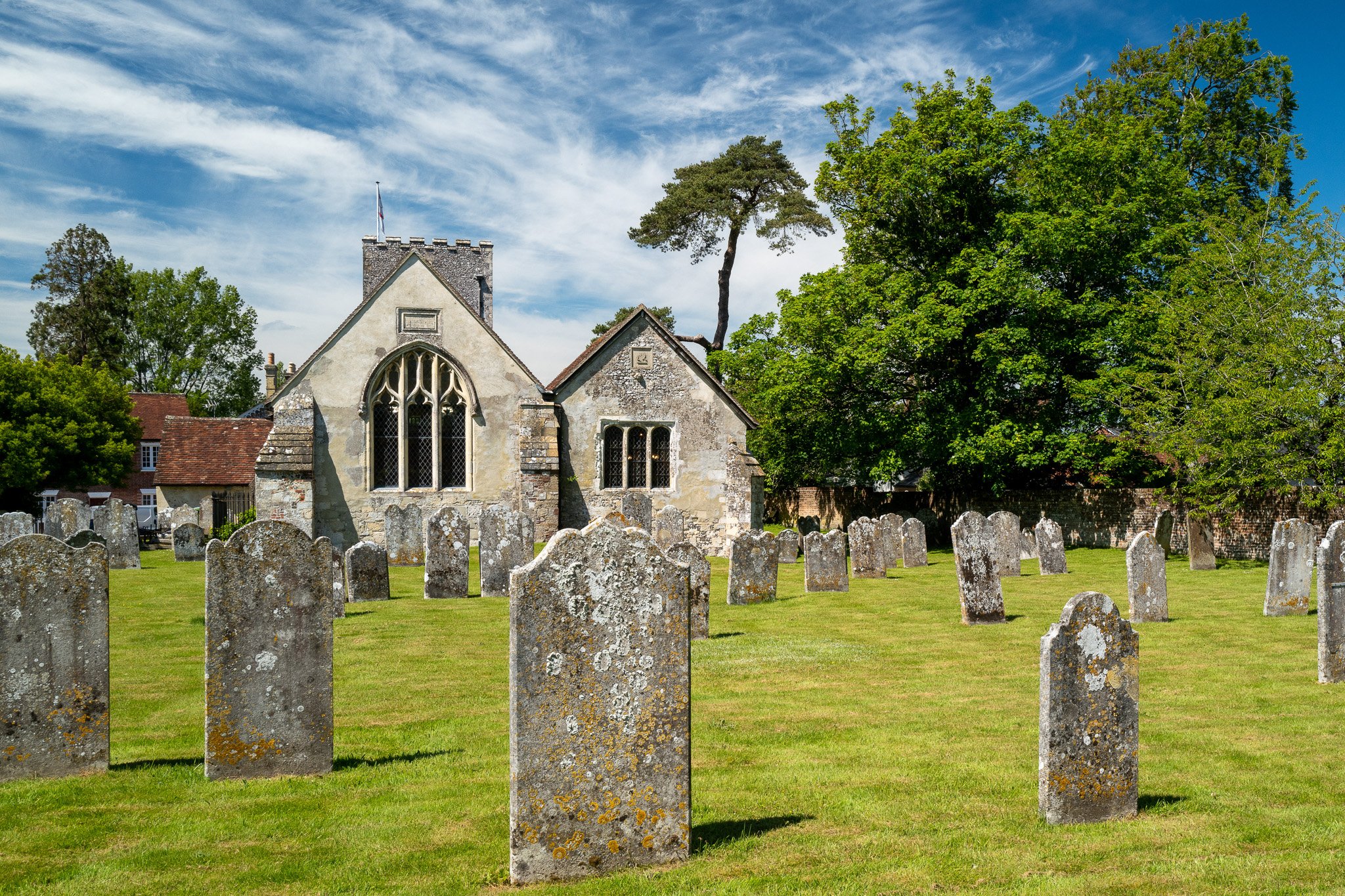
St James without the Priory Gate
The Priory, founded by Henry I at Portchester in 1133, was re-established at SOUTHWICK during the period 1145-53, but the church of St. James, the Parish Church, was probably in existence before the Priory was built and maybe before the Norman Conquest. The Church was restored in 1566 by JOHN WHYTE formerly a retainer of Sir Thomas Wriothesley, the Lord Chancellor, and later, the first Earl of Southampton. John Whyte was granted possession of the Priory, with all its rights, profits and appurtenances, by Henry VIII on 15th March, 1539, after the suppression of the monasteries, and is commemorated by a tablet set above the East window on the exterior wall. The FONT is an early 12th century bowl of sufficient size for the "dipping" of infants, as was the practice of those days, on a modern pedestal and base. The OCTAGONAL PIERS in the North aisle, and the arcading, are of material removed from the Priory buildings, and the windows of the aisle, and the North Chapel, are Tudor type, some containing fragments of glass from the Priory windows. The fine pair of floriated CAPITALS set in an angle of the wall, in the North Chapel give an impression of the style and decoration, and the size of the columns at the Priory.
The REREDOS or ALTAR PIECE is an early 18th century painting by an Italian artist, in a style at one time common enough in well-appointed churches, but now only occasionally encountered. The EAST WINDOW is a restored three-light Perpendicular window of the 15th century and above, on the South side of the Sanctuary, the ARMS of the NORTONS are set in three plaques. The massive brass ALTAR CANDLESTICKS are the gift of Richard Norton, Master of Southwick, in the early 17th century and a descendant of John Whyte in the female line.
The ALTAR TABLE is Elizabethan and the RAILS, Jacobean. The larger BOX PEW is the SQUIRE'S PEW and the divided box pew on the other side was, in former days, reserved for the ladies of Southwick House. Until 1955 the whole of the floor space of the nave contained matching box pews of this 17th century pattern and the Church was described as "one of the best examples of an unrestored Church in the South of England". The replacement seating which, with the passing of time, became necessary, was made by the craftsmen of the Southwick Estate.
The squires chaplain officiates at the services and can be contacted using the contact form below.